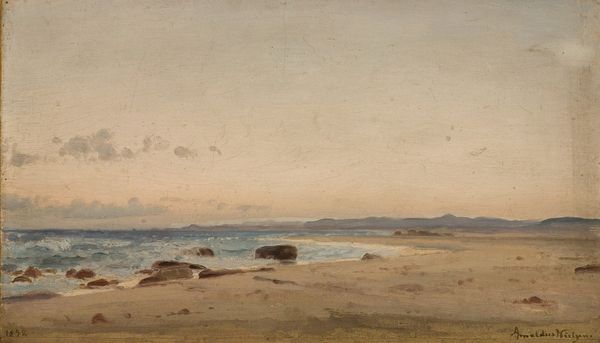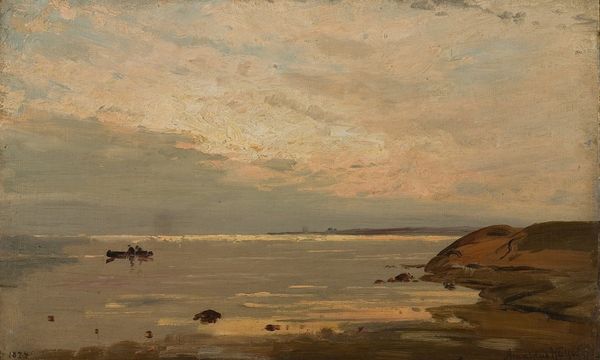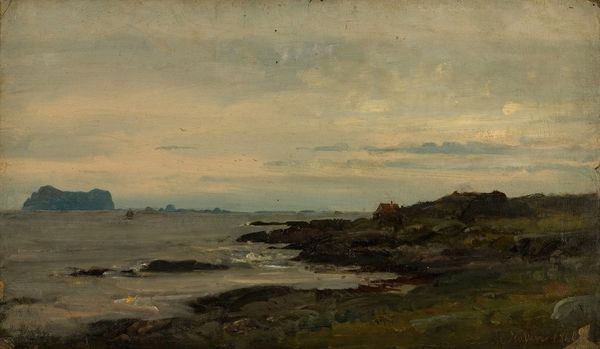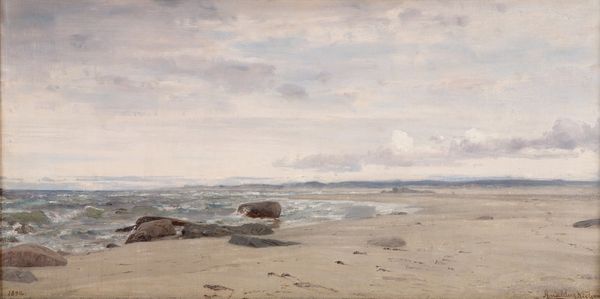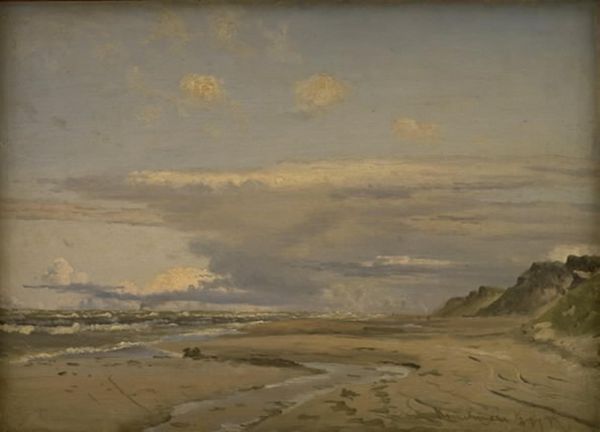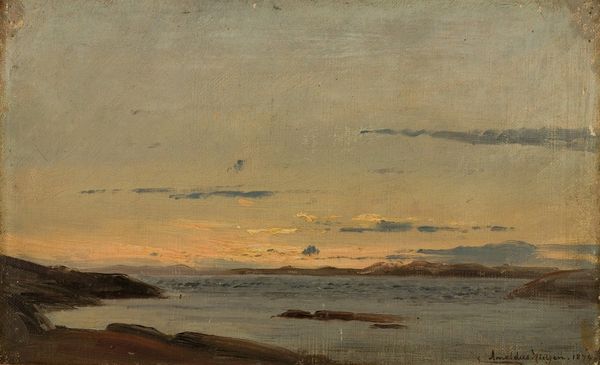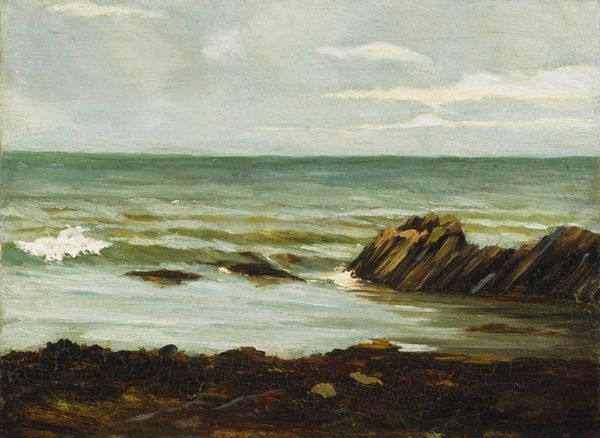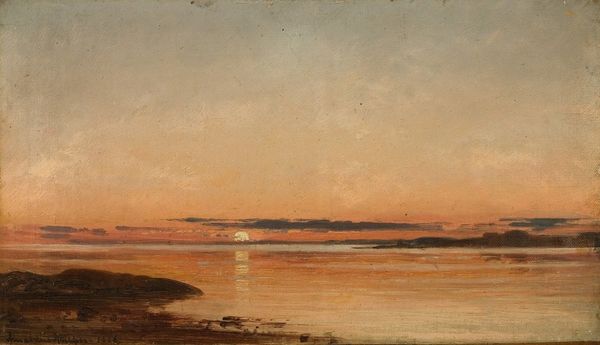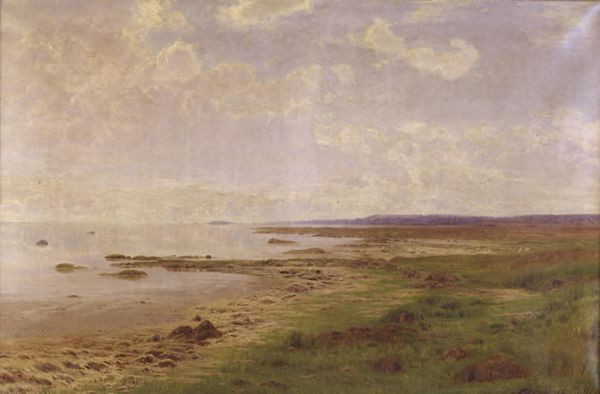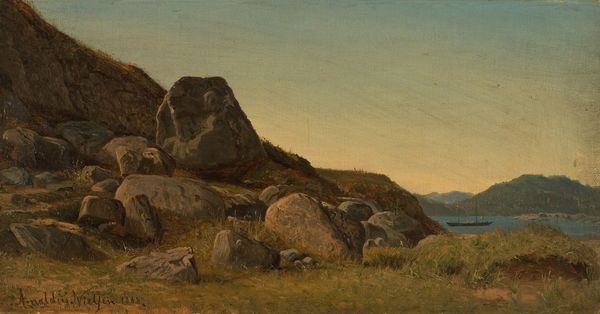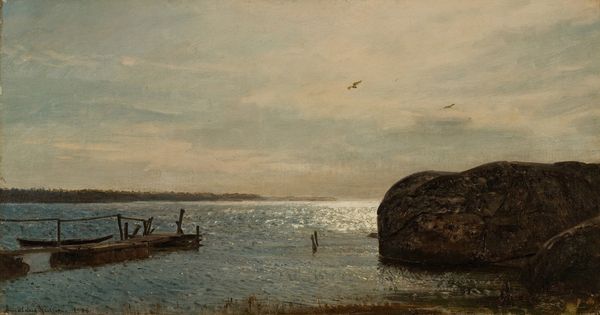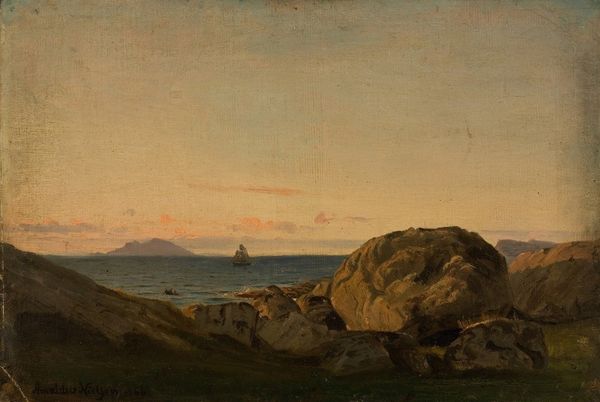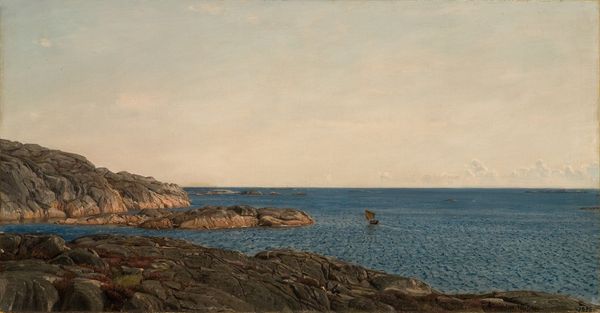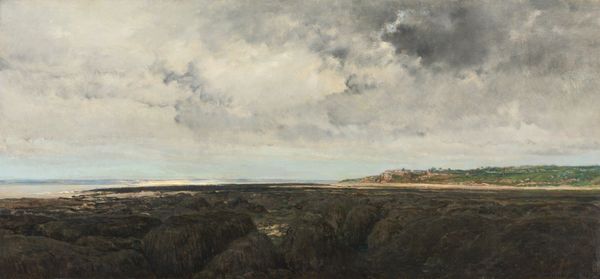
Copyright: Public Domain: Artvee
Editor: This is "Aften ved Nærland, Jæren" painted in 1894 by Amaldus Nielsen. It’s an oil painting, and what immediately strikes me is how muted the colors are; it almost feels monochromatic. What can you tell me about this piece? Curator: Let's start with the oil paint itself. The very substance carries weight, doesn't it? The specific pigments Nielsen chose, the way they are ground and mixed, reflect the availability and cost of materials in 1894. These weren’t mass-produced acrylics. What social class do you think could have commissioned or afforded artworks using such materials? Editor: Probably the upper class, right? With the Industrial Revolution in full swing, there’s more distinction in who can afford what. I wonder what went into making these colors, and who would have done it? Curator: Exactly. Someone had to source, grind, and prepare the pigments. Think about the labor involved before Nielsen even touched his brush. Even the canvas—the linen, its weave— speaks to specific production practices. How might the economic landscape of the time have influenced his artistic choices? Was he making this to represent the value of working the land, or was it just a product? Editor: That's a fascinating angle! Perhaps by painting a landscape lacking in visible signs of labor, he's inadvertently highlighting the absence, or the invisibility, of that labor. It looks like an untouched, idealized view, removed from the realities of production. Curator: Precisely. The 'Realism' and 'Impressionism' tags on the artwork contrast—is Nielsen trying to show the truth of the land or give an impression of beauty? Consider the irony: capturing an apparently 'natural' scene required significant human intervention, from the mining of pigments to the cultivation of flax for the canvas. Editor: It really makes you think about all the steps that go into creating art, even before the artist's vision comes into play. It’s not just about inspiration, but about tangible resources and social systems. Thanks, that was really enlightening. Curator: A great close examination and very necessary questioning for the purposes of interpreting this artwork.
Comments
No comments
Be the first to comment and join the conversation on the ultimate creative platform.
